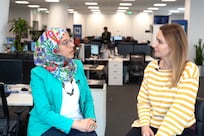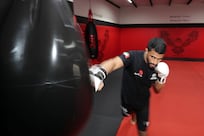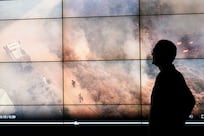DUBAI // The cost of dealing with road accidents could be reduced by hundreds of millions of dirhams if a new set of road safety measures was implemented, a study has concluded.
The number of crashes in Dubai could be reduced by more than 2,400 annually, saving an estimated Dh280 million, by introducing crash barriers and raising the number of foot bridges and speed cameras according to a paper by Mostafa al Dah, a doctoral student at the UK’s Loughborough University. He said the subject was of personal interest because of painful past experiences.
“I was given the data on the idea that I would come up with a set of recommendations,” said Mr al Dah, a 30-year-old from in Dubai. “I hope that these will be implemented more widely. I’ve lost a number of friends and acquaintances to carnage on the roads. That was one of the reasons I did this study.”
The results are particularly relevant in the light of recent disclosures in other emirates. A report released this month showed Abu Dhabi averaged one crash every five minutes, costing Dh5.8billion a year. Sharjah police began a campaign to raise awareness this week, saying about 350 accidents a day were being recorded on its streets and that more than 40 pedestrians had been killed so far this year.
Mr al Dah’s report analysed tens of thousands of Dubai crash records from between 1995-2006 and matched possible solutions against their causes. He said that it was the first time Dubai accident statistics had been studied in such detail. Copies of the report have been submitted to Dubai and Abu Dhabi authorities, he said.
The savings figure is based on an estimate taking into account vehicle repair, cost of medical treatment and lost earnings. That number might be even higher than Mr al Dah predicted should his recommendations be enacted, said Simon Labbett, the regional director of the Transport Research Laboratory, a UK-based road safety firm which has an office in Abu Dhabi.
“Dh280 million is potentially an underestimate of the savings that could be achieved,” he said. “It could be substantially more. For an investment in infrastructure of several million dirhams, authorities can lower the annual cost of accidents by billions.”
Dubai police only publish annual figures on the number of injury and non-injury accidents which involve legal action. Statistics gathered by Mr al Dah suggest that there were 172,000 accidents of differing degrees of severity in Dubai in 2004, or more than 470 per day.
Pedestrians were at particular risk according to the report as they accounted for 59 per cent of fatalities in crashes involving a single car. It suggested several measures to protect them, including grade-separated crossings, such as bridges or underpasses, which have been proven to reduce such accidents by 82 per cent.
Others include replacing zebra crossings with pedestrian crossings with traffic signals, which motorists are more likely to heed because of the punishments associated with running a red light.
While Mr al Dah admitted his research was more academic and did not focus on specific areas in which to implement the measures, he hoped the report could act as a theoretical framework for further action.
Hussain Mohammed al Banna, the director of Dubai’s Roads and Transport Authority traffic department, confirmed he was aware of the report but declined to comment. The Dubai police traffic department has set an ambitious goal to reduce the number of fatalities on the emirate’s roads to zero per 100,000 inhabitants by 2020 from 12.9 per 100,000 last year.
Authorities are always on the lookout for better preventative measures to cut the number of traffic-related mishaps, said Lt Col Saif al Mazrouei, the deputy head of the traffic department. Police have established a specialised section to carry out research on the traffic situation in the emirate and suggest solutions, he said. “Increasing radars is one of our strategic objectives to curb road accidents and we are always in talks with the Roads and Transport Authority to plan foot bridges where needed,” he said.
* with additional reporting by Wafa Issa





